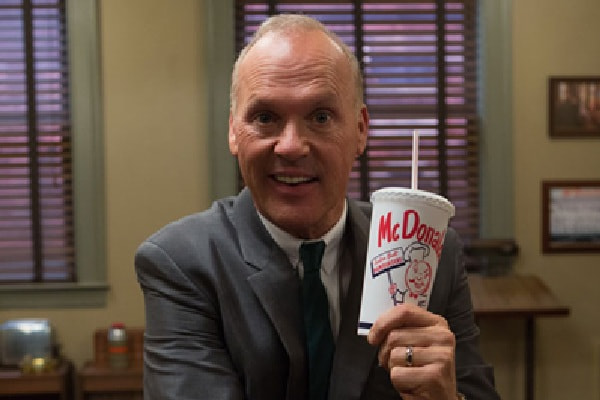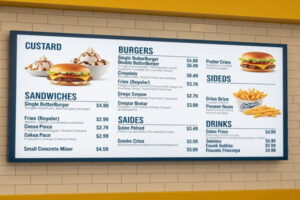
Ray Kroc isn’t just a name you see in business textbooks—he’s the man who turned a small hamburger stand into the world’s largest fast-food empire. By the time he passed away in 1984, his net worth was around $600 million, which translates to roughly $1.4 billion in today’s dollars. But Kroc’s journey wasn’t just about money—it was about vision, persistence, and revolutionizing the food industry. Let’s dive into the story of Ray Kroc and uncover how he built the McDonald’s empire.
Early Career: From Milkshake Mixers to Million-Dollar Ideas
Before Ray Kroc became the face of McDonald’s, he wore many hats. He worked as:
-
A real estate agent
-
A paper-cup salesman
-
A band pianist
It wasn’t until his 50s that he stumbled upon the opportunity that would define his legacy. While selling milkshake mixers, Kroc met Richard and Maurice McDonald, who ran a small but innovative hamburger stand in Des Plaines, Illinois. He immediately saw potential for nationwide expansion.
In 1955, Kroc opened his first McDonald’s franchise, and within three years, he had expanded to 34 locations. He didn’t just sell burgers—he sold a system, a consistent experience that customers could trust anywhere in America.
Turning McDonald’s into a Fast-Food Empire
Kroc’s genius lay in his approach to franchising and standardization. Here’s how he built the empire:
-
Affordable franchise fees: Sold franchises for just $950 (around $9,500 today).
-
Strict operational rules: Franchisees had to maintain cleanliness, menu uniformity, and quality standards.
-
Menu innovations: Introduced the Egg McMuffin, Filet-O-Fish, and the Big Mac to attract new customers.
-
Real estate strategy: Kroc retained ownership of the land under most franchises, earning rent in addition to sales royalties.
By 1961, he bought the McDonald brothers’ business for $2.7 million, solidifying his control. Under Kroc, McDonald’s grew to 7,500 locations, generating over $8 billion in annual system-wide sales by the time of his death.
Diversifying Beyond Burgers: Sports and Investments
Ray Kroc wasn’t just about hamburgers. In 1974, he purchased the San Diego Padres, expanding his brand presence and diversifying into sports. He earned from McDonald’s sales, royalties, and stock growth, and his savvy business moves made him a model for aspiring entrepreneurs.
Personal Life: The Man Behind the Business
Ray Kroc was born on October 5, 1902, in Oak Park, Illinois. He had a colorful personal life, marked by ambition and philanthropy.
-
Marriages: He first married Ethel Fleming in 1922. They divorced in 1961 after disagreements about relocating for McDonald’s expansion. In 1969, he married philanthropist Joan Smith, who inherited most of his fortune.
-
Real estate: In 1965, Kroc and Joan purchased the 554-acre Double-Arch Ranch in Santa Ynez Valley for $600,000. By 2020, it was valued at $29 million.
-
Health: Kroc had a stroke in 1980 and later entered an alcohol rehabilitation facility. He passed away on January 14, 1984, from heart failure in San Diego, California.
Philanthropy and Legacy
Kroc’s impact extended far beyond burgers and fries. He donated over $225 million to medical research through the Kroc Foundation. He also supported the Salvation Army’s Ray & Joan Kroc Corps Community Centers, helping families of children receiving medical care.
His wife, Joan Kroc, continued the philanthropic legacy. By 2003, she was worth $3 billion, and she gave away nearly her entire fortune to charity after her death.
Business Lessons from Ray Kroc
Here are seven key lessons entrepreneurs can learn from Ray Kroc’s career:
-
Persistence Pays Off: Kroc started his empire in his 50s—proof it’s never too late to pursue a dream.
-
System Over Product: He didn’t just sell burgers; he sold a replicable, consistent customer experience.
-
Standardization is Key: Franchisees followed strict guidelines to ensure every McDonald’s felt familiar to customers.
-
Innovate Constantly: From the Big Mac to the Egg McMuffin, Kroc knew the importance of evolving the menu.
-
Think Real Estate: Owning the land beneath franchises gave Kroc steady, long-term income beyond sales.
-
Diversify Smartly: Investments like the San Diego Padres expanded his brand influence.
-
Give Back: Philanthropy was central to his legacy, showing the importance of using wealth to create lasting impact.
The McDonald’s Empire Today
Thanks to Kroc’s vision, McDonald’s isn’t just an American staple—it’s a global phenomenon. Today, the fast-food giant:
-
Operates over 40,000 locations worldwide
-
Generates billions in annual revenue
-
Serves as a model for franchising systems globally
His story inspired business leaders like Warren Buffett and continues to serve as a case study for entrepreneurship, franchising, and scaling a business.
Also Read : Culver’s Menu with Prices (2024)
Final Thoughts: More Than Just a Hamburger King
Ray Kroc’s life is a masterclass in business strategy, determination, and vision. From a small stand in Illinois to a global fast-food empire, his journey reminds us that success often comes from innovation, consistency, and the courage to take calculated risks.
Even after his passing, his influence is felt everywhere you see the Golden Arches. McDonald’s is not just a restaurant—it’s a legacy, proof that one person’s vision can truly change the world.
FAQs About Ray Kroc
Q1: How did Ray Kroc make his fortune?
He earned from franchise fees, royalties, stock growth, and real estate under McDonald’s franchises.
Q2: When did Kroc buy the McDonald brothers’ business?
He purchased it in 1961 for $2.7 million, taking full control of the brand.
Q3: Did Ray Kroc invest in anything else?
Yes, he bought the San Diego Padres in 1974 and engaged in other investments to expand his business influence.
Q4: How much did Ray Kroc donate to charity?
Through the Kroc Foundation, he donated over $225 million to medical research and community initiatives.
Q5: What is Ray Kroc’s lasting legacy?
He transformed fast food into a global franchise model, inspired countless entrepreneurs, and left a mark on philanthropy and business strategy.


